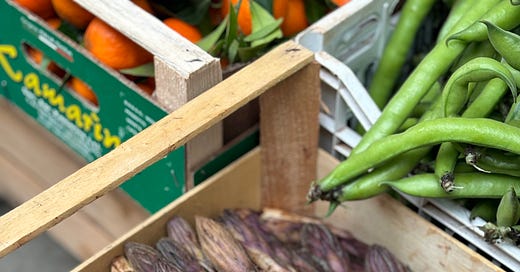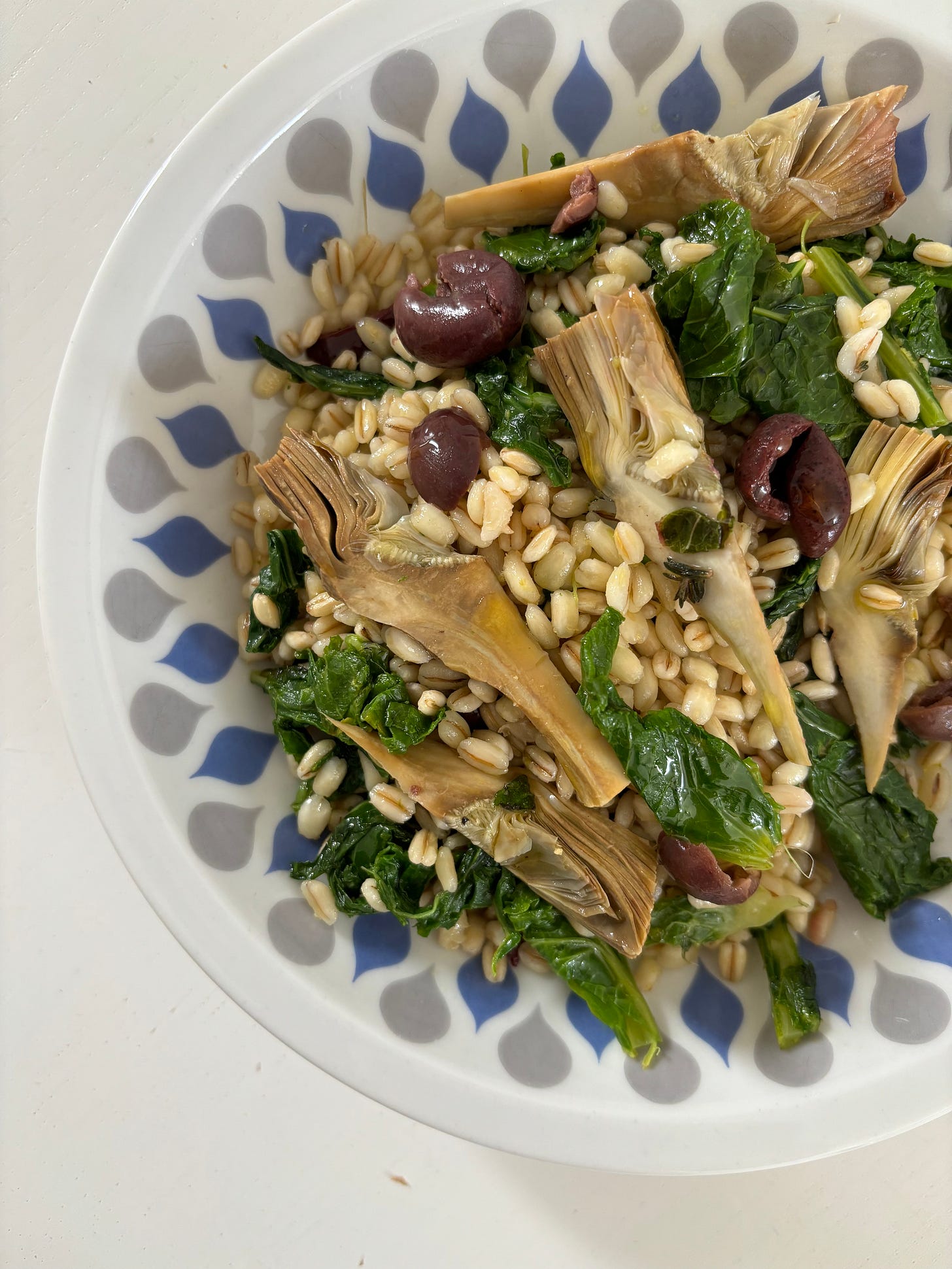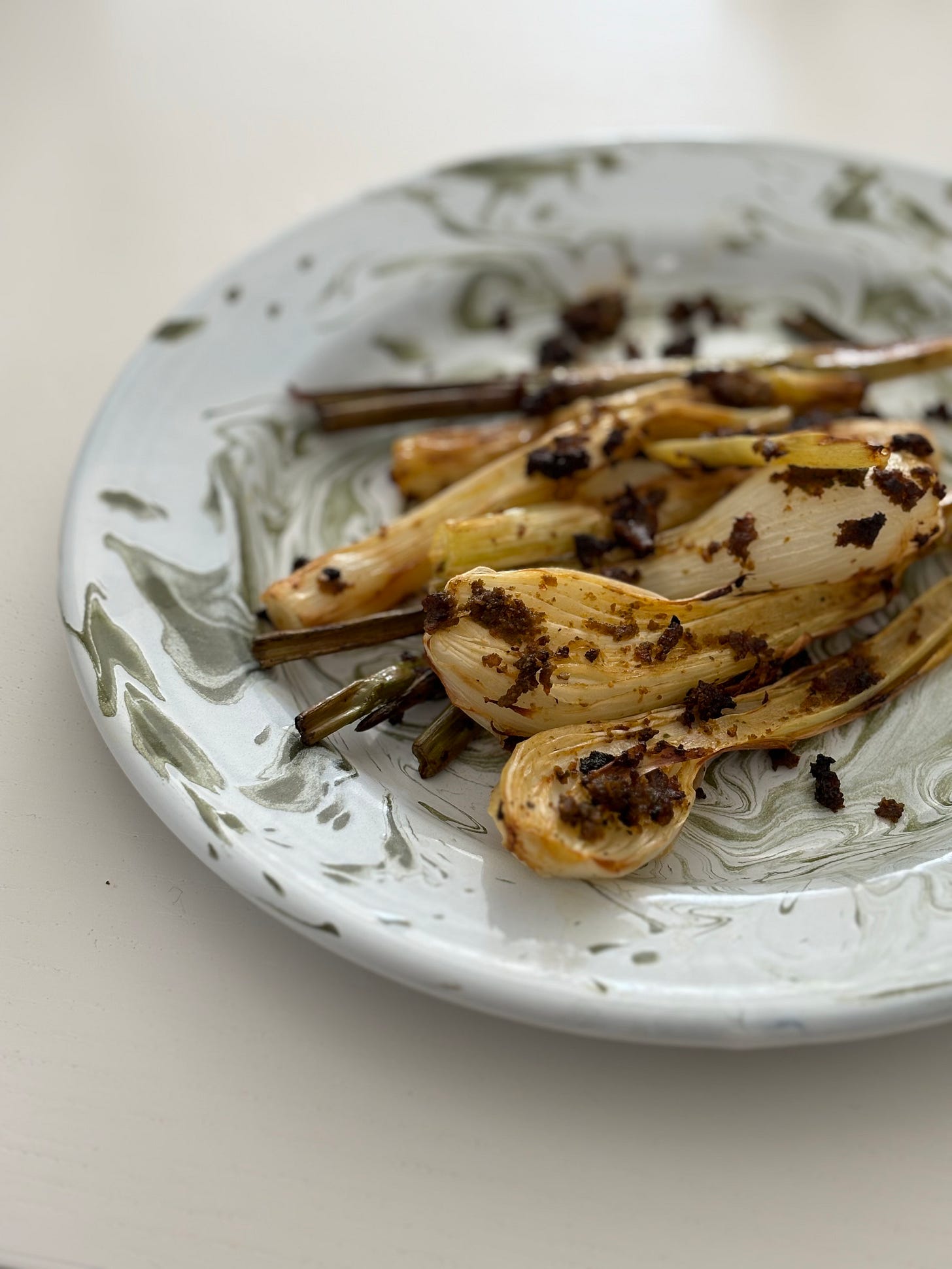Since I returned to Polignano, after 8 years in Sweden, my way of cooking is undergoing a transformation, influenced by the ingredients I have available.
Every week, at the market, I encounter seasonal surprises or, rather, micro-seasonal, as in the case of "sporchie," parasitic plants that resemble asparagus in shape and are the quintessence of bitterness in flavor. I talked about it here.
In Puglia, where the sun starts to shine strongly already in April, all flavors are more concentrated. Fruit, vegetables, taste more, have a more intense flavor, which I like to feel in its purity, without complicated preparations.
Bitterness is dominant on Apulian tables and is frequent in wild food, which grows spontaneously in the countryside. Asparagus, in Puglia, is for example, an asparagus to the nth power, thin and narrow, which emerges among thorny brambles, making its way through the cracks in the limestone rock. Its herbaceous and bitter taste prevails, claiming the scene: it is no coincidence that in frittata (omelettes) here we don't add Parmigiano but a couple of eggs, salt, pepper, and there you go, the asparagus omelet - which tastes like the countryside - is ready.
At the same time, the dishes do not lack their elegance. I reflected on this as I ate the "benedetto," the typical Easter antipasto of Bari, in which each element is in harmonious contrast with the other, like in an orchestra. A forkful of sweet ricotta, followed by a bitter and salty Leccino olive in brine, a piece of hard-boiled egg, with its sulfurous and round flavor, the freshness and acidity of the orange, the smokiness and peppery flavor of the sausage. A peasant elegance in extreme balance.
How and when did my grandparents learn to eat like this? Who decided the order of these combinations and established that this is how it's done? It's hard to answer, it's all in the DNA, in the gustatory genetic endowment that I inherited from my parents and grandparents and ancestors before them. I can only say that these are combinations that work, in which I recognize myself.
Days ago at a food expo in Lecce, chef Floriano Pellegrino from Bros restaurant defined Puglian cuisine as "devastating," specifically referring to the concentrated and intense flavors we are accustomed to. Our gustatory memory.
He said: ”If young people in the rest of Europe, after a night at the disco, eat hamburgers and fries, dishes with a round and reassuring flavor; in Scorrano, in the deep Salento, the sandwich is with strong fermented ricotta and anchovies”. Flavors of such intensity as to make your head spin just by smelling them.
Like coffee, bitter and burnt, which we usually gulp down quickly, like a shot, capable of waking you up instantly.
Immersed in this concentration of intense and persistent flavors, my cooking is changing, I observe it in the dishes I bring to the table and eat, recognizing myself.
I leave you with two of the recipes I loved the most this spring, to take you to Puglia.
Warm barley salad with mint-marinated artichokes and blanched cima di rapa
Ingredients for 2
2 artichokes
120 g quick-cooking barley
8 outer leaves of cime di rapa (alternatively, spinach also works)
A handful of fresh mint
2 tablespoons Leccino olives
1 lemon
Salt
Pepper
Extra virgin olive oil
Clean the artichokes (you can follow my tutorial here), cut them into wedges, and steam them for 10 minutes, until tender.
Season them in a bowl with lemon juice, a teaspoon of extra virgin olive oil, and mint, and let them rest for a few minutes.
Meanwhile, blanch the cime di rapa for a few minutes, leaving them fairly green. Drain and set aside.
In the same water, cook the barley, draining it al dente.
Pit the olives.
Compose the salad by mixing the barley with the roughly chopped turnip leaves and olives. Season with the lemon juice from the artichokes and arrange the artichokes on top of the barley. Complete with a grating of lemon zest and a grind of fresh pepper. Enjoy warm.
Baked sponsali with olive and sun-dried tomato pesto
Preface: sponsali are a particular type of leeks found in Puglia, usually used to make onion calzone. Their name refers to the ritual of the promise of marriage where, indeed, the engaged couple and relatives consumed a savory pie filled with these leeks.
Ingredients for 2
4 sponsali
1 tablespoon and 1/2 of sun-dried tomatoes
A tablespoon of black olives
A handful of fresh parsley
1 tablespoon of tahini sauce
Extra virgin olive oil
Prepare the pesto by mixing the tomatoes, olives (pitted beforehand), parsley, oil, and tahini sauce.
Wash the sponsali and massage them with the pesto.
Bake in a static oven for 9 minutes at 180 degrees.
An umami bomb!









I adore photographing vegetables. Their beauty at market is somehow compelling to me.
We have very cheerful artichokes in the PSU Portland Farmers Market. Their rotund, overfed American oversized globes in contrast to their lithe Italian selves. Lovely recipes. Thank you.
Grazie Flavia! Deve essere sperimentato!!